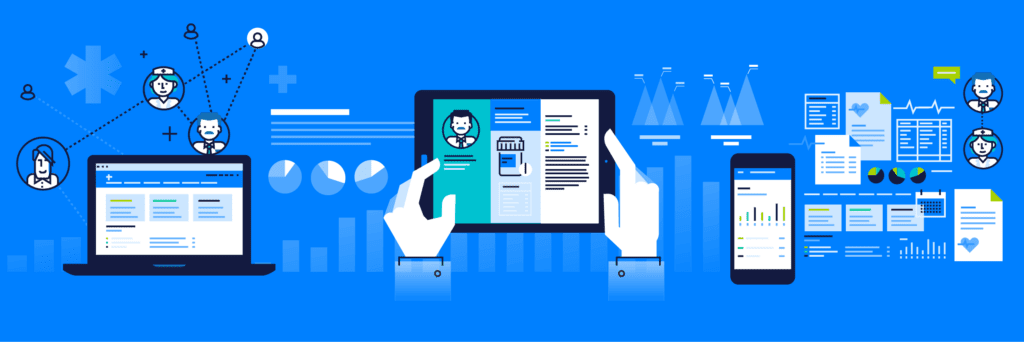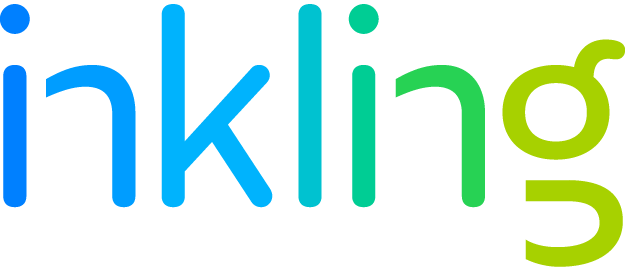Healthcare Onboarding Software: Streamlining Employee Efficiency and Enhancing Care

In the fast-paced and ever-evolving healthcare industry, a healthcare onboarding software solution coupled with efficient healthcare employee onboarding of new employees is critical for success in promoting employee enablement, increasing productivity and retention, and improving performance in healthcare.
Healthcare organizations face numerous challenges when it comes to bringing new staff members into the fold, including complex regulatory requirements, rigorous credentialing processes, and the need to ensure seamless integration with existing systems and workflows. To address these challenges, healthcare organizations can greatly benefit from implementing a healthcare onboarding software solution.
The Need for a Solution
1. Streamlined Administrative Processes: Healthcare onboarding involves a multitude of administrative tasks such as –
- Collecting personal information
- Verifying credentials
- Conducting background checks
- Managing documentation
Traditional paper-based methods are time-consuming, prone to errors, and often lead to inefficiencies. By implementing a healthcare onboarding software solution, organizations can automate these processes, saving time and reducing the administrative burden on staff members.
2. Compliance and Regulatory Requirements: Compliance with healthcare regulations, such as HIPAA (Health Insurance Portability and Accountability Act), is of paramount importance in healthcare organizations. Onboarding software solutions can help ensure compliance by providing built-in templates and workflows that align with regulatory guidelines. These solutions can also:
- Automate the collection of necessary documents
- Facilitate the completion of required training modules
- Track compliance status
All of this will help to reduce the risk of non-compliance and potential penalties.
3. Enhanced Data Security: Healthcare organizations handle sensitive patient information and employee data, making data security a top priority. Traditional onboarding processes involving physical documents and manual data entry increase the risk of data breaches or loss. A healthcare onboarding software solution provides secure, encrypted platforms to store and transfer data, limiting access to authorized personnel and enhancing accountability and data integrity.
4. Improved Efficiency and Time-to-Productivity: Effective onboarding sets the stage for new employees to become productive members of the healthcare team quickly. Healthcare onboarding software provides centralized platforms where new hires can remotely access and complete necessary forms, training modules, and compliance requirements. Automation eliminates redundancy and ensures a consistent and streamlined onboarding experience. By reducing administrative bottlenecks and expediting the onboarding process, organizations can accelerate time-to-productivity for new employees.
5. Customizable Workflows and Documentation: Healthcare onboarding software allows organizations to tailor workflows and documentation to their specific needs. This customization ensures that the onboarding process aligns seamlessly with the organization’s unique requirements. Customizable workflows enable the inclusion of specific forms, training modules, and procedures that are relevant to different roles within the healthcare setting. This adaptability not only enhances the efficiency of onboarding but also ensures that each new hire receives a personalized and comprehensive introduction to their responsibilities and the organization’s expectations.
6. Integration with Existing Systems: To further enhance efficiency, healthcare onboarding software often integrates seamlessly with existing human resources and management systems. This integration eliminates the need for duplicate data entry and ensures a cohesive flow of information across various departments. Whether it’s syncing employee information with payroll systems or updating training records in real-time, the integration capabilities of onboarding software contribute to a more interconnected and synchronized organizational infrastructure.
7. Real-Time Monitoring and Reporting: Onboarding software provides real-time monitoring and reporting features that allow administrators to track the progress of new hires. This transparency enables proactive management by identifying any potential bottlenecks or issues in the onboarding process. By having instant access to comprehensive reports, organizations can make informed decisions, optimize onboarding workflows, and address any challenges promptly. This real-time visibility ensures a smoother onboarding experience for both staff and administrators.
8. Mobile Accessibility for On-the-Go Onboarding: Recognizing the modern workforce’s mobile nature, healthcare onboarding software often offers mobile accessibility. New hires can conveniently complete onboarding tasks using their smartphones or tablets, providing flexibility and convenience. This mobile accessibility is particularly beneficial for healthcare professionals who may have irregular schedules or work remotely. It ensures that onboarding remains accessible and efficient, irrespective of the physical location of the new employee.
9. Employee Engagement and Retention: An engaging onboarding experience contributes significantly to employee satisfaction and retention. Healthcare onboarding software can incorporate interactive elements, welcome videos, and multimedia content to create a positive and engaging introduction for new hires. By fostering a sense of connection and belonging from the start, organizations can enhance employee morale, improve retention rates, and contribute to the overall success of their healthcare teams.
10. Continuous Learning and Development Opportunities: Beyond initial onboarding, healthcare onboarding software can serve as a platform for continuous learning and development. Organizations can integrate modules that provide ongoing training, updates on industry best practices, and opportunities for professional growth. This continuous learning approach not only supports employee development but also ensures that healthcare professionals stay abreast of evolving industry standards, ultimately contributing to the overall excellence of patient care.
Healthcare Onboarding Best Practices
1. Standardize Onboarding Processes: Standardization is key to ensuring consistency in the onboarding process. Best practices include creating a checklist of the necessary documentation, providing access to software applications, and clearly communicating the expectations and goals of the organization. With healthcare onboarding software, standardization is easily achieved as all the necessary forms and information can be easily accessed by the new hire, and all healthcare employees can be held to the same standard.
2. Personalized Onboarding Experiences: Although standardization is important, personalized onboarding experiences can significantly enhance employee engagement and satisfaction. Healthcare organizations should tailor the onboarding process to individual roles and responsibilities, providing job-specific training and resources. Onboarding software solutions can be configured to deliver role-specific content, enabling new hires to quickly acquire the knowledge and skills relevant to their positions.
3. Encourage Employee Enablement and Retention: Onboarding is an opportunity to create engagement, and enablement and increase retention. Best practices include assigning a mentor, providing early success opportunities, and promoting teamwork and collaboration. Healthcare onboarding software facilitates mentorship, team-building, and socialization, thus promoting employee engagement and loyalty.
4. Measure the Success of Healthcare Employee Onboarding: Monitoring and evaluating the effectiveness of the onboarding process is essential to identify areas of improvement and ensure that healthcare employees are fulfilling their roles. Best practices include conducting surveys, soliciting feedback, and analyzing performance data. Healthcare onboarding software can provide insights into the success of onboarding, including employee retention, job satisfaction, productivity, and overall business performance.
Implementing healthcare employee onboarding best practices and using healthcare onboarding software can help streamline orientation, promote productivity, and ensure that new employees quickly and easily understand their role within the organization. The benefits of healthcare onboarding software will undoubtedly enhance your entire onboarding process.
Contact or chat with us today to learn more about our work and abilities within healthcare, and how Inkling helps streamline and solve your healthcare onboarding obstacles.

